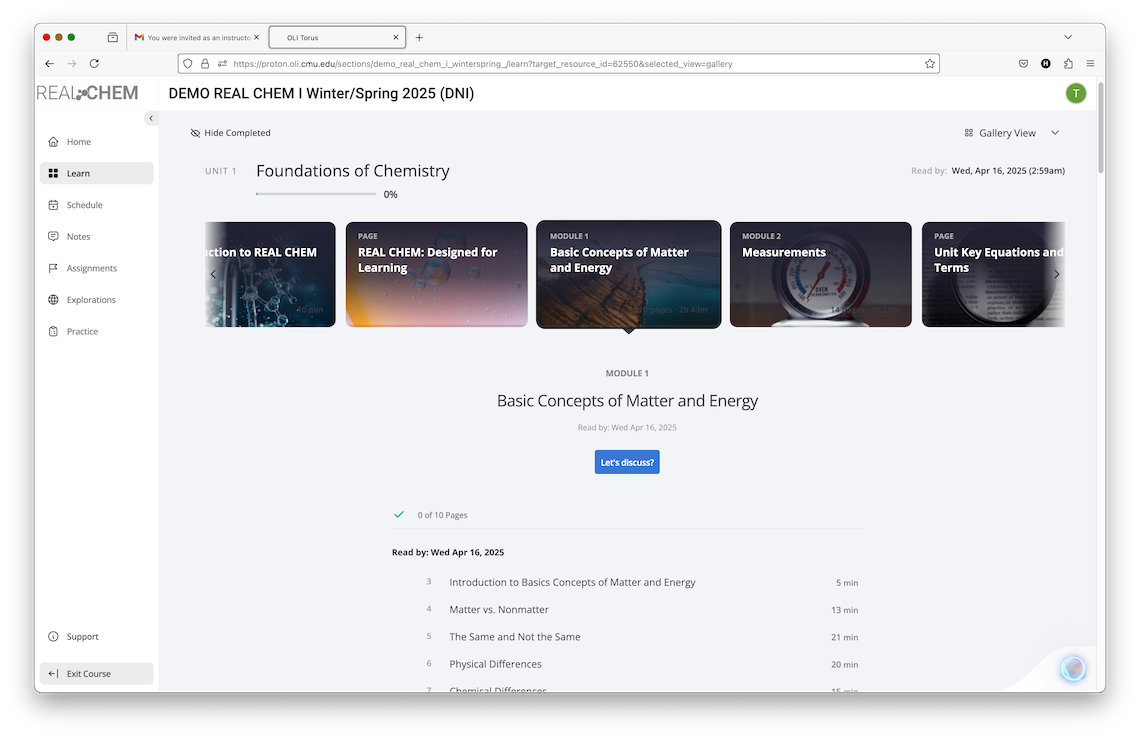Create and Improve Courses with Torus
Why Torus is Right for You
Learning Science Built-In
Applies proven learning science to help you design engaging and effective learning experiences
Continuous Improvement with Data
Tracks student performance in real time, so you can refine your course content based on real learner needs
Modular and Customizable
Use, adapt, or remix high-quality learning components to fit your teaching goals—no need to start from scratch
Open and Interoperable
Integrates smoothly with your existing systems and gives you the freedom to customize or contribute to the platform
Latest News
New dates added: Come see Torus!
Explore the next generation of OLI’s learning platform—Torus. Join our June 26 webinar to see the modern new UI, discussion boards, LMS gradebook passback, AI assistant tools, collaborative notes, and more.
Torus v.31 Strengthens Flexibility and Insight for Teaching and Learning
Adds Score-as-You-Go feedback, redesigned scheduling, LTI integration, and cleaner data exports for smoother teaching workflows.
Design Demo ·
Demo Video ·
Release Notes (coming soon)
Come see Torus!
Explore the next generation of OLI’s learning platform—Torus. Join our June 26 webinar to see the modern new UI, discussion boards, LMS gradebook passback, AI assistant tools, collaborative notes, and more.
Frequently asked questions
We’re here to help with any questions you have about using, customizing, or teaching with Torus.





